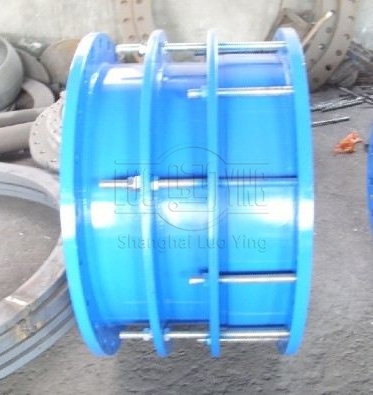Description of expansion joint performance and parameters
Sep-22-06
The expansion joint has a top-up structure and a separate pressure balance expansion joint. As the expansion joint closes, the pressure passes through the gap between the main pipe and the sleeve so that the back pressure is generated when the valve flap closes, which is beneficial to the sealing of the pipeline. When the expansion joint is to be opened, the actuator should lift the telescopic rod to open the expansion joint.Since the expansion joint valve has a greater flow capacity to the gap between the main pipe and the sleeve, the main pipe establishes a balance, thus opening the main pipe with less force. The stroke of the expansion joint is then adjusted by the length of the barrel of the pipe core. At the beginning of the assembly of the expansion joint, the stroke is controlled by machining the inverted sealing end of the pipe core, and the stroke of the expansion joint has a negative deviation, and after grinding the sealing surface of the pipe core and the pipe, its stroke takes a positive deviation, so that the stroke of the expansion joint can be ensured within the allowable error even after grinding the sealing surface of the pipe core and the pipe several times.
After the improvement of the core assembly, a new structure of the expansion joint was tested 500 times by a thermal test rig. After the test was completed, the core assembly was disassembled and inspected, and no wear marks caused by vibration were found. After 3 months of actual operation on site, the expansion joint was disassembled and inspected, and no wear marks were found on the core components, proving that the expansion joint could not be opened for a long time.
Expansion joints have saturated nonlinear characteristics (e.g., temperature piping). When the flow rate is small, the pipeline can operate normally, but when the flow rate is large, the pipeline is sluggish. Or the pipeline is sensitive or even oscillating and unstable at low flow rate, but at high flow rate, the pipeline can operate normally. The failure is caused by the selection of linear or quick-open flow characteristic expansion joints. The troubleshooting method is to replace the valve internals or expansion joints of the expansion joint, or install expansion joints so that the expansion joints meet the requirements of equal percentage or parabolic flow characteristics.


